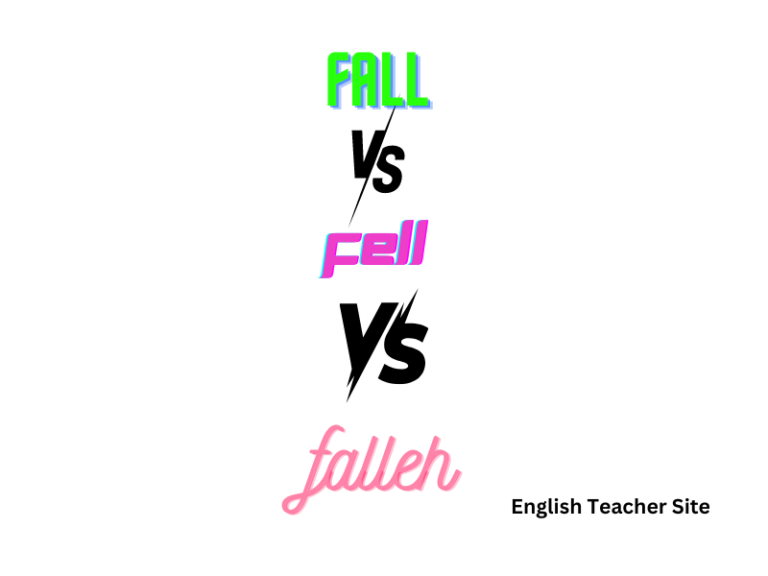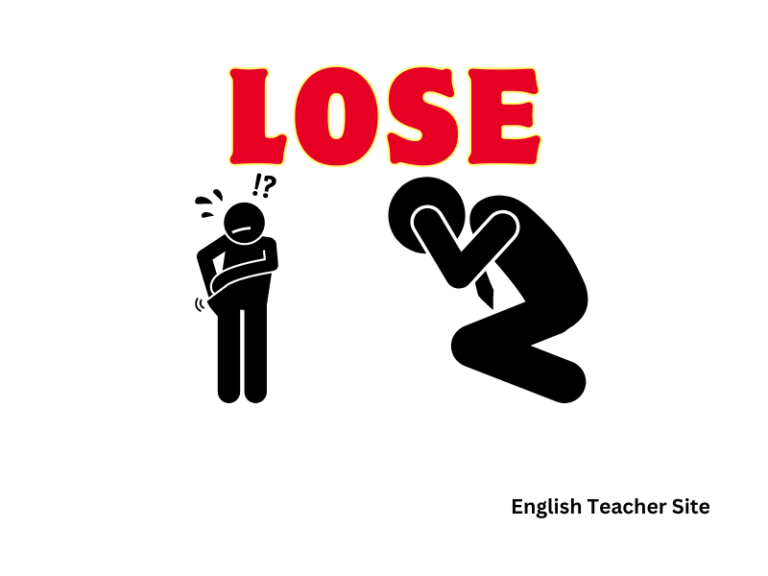What’s the Past Tense of the Verb “To See”: An Overview of Simple Past Tense Usage

- The past tense of “to see” is “saw”, reflecting its status as an irregular verb.
- “Saw” is used to express the action of seeing that took place at a definite time in the past.
- The past participle of “to see” is “seen” ,which is utilized with helping verbs to construct perfect tenses.
Navigating the complexities of English grammar can be a challenge, particularly when dealing with irregular verbs. One such verb, “to see,” departs from regular conjugation patterns and can cause confusion among learners. Understanding its past tense form is crucial for proper communication and writing. The verb “to see” is categorized as an irregular verb, which means it does not follow a standard pattern of tense changes.
What’s the Past Tense of the Verb ‘To See’?
In the simple past tense, ‘to see’ becomes saw. This form is used to talk about a single event that happened in the past. For example:
- Yesterday, she saw a rainbow in the sky.
When discussing actions in the past that have a connection to the present, or when the exact time of the action isn’t specified, the past participle form “seen” is used. It is generally accompanied by an auxiliary verb such as ‘has’, ‘have’, or ‘had’. Here is how it is applied:
- They have seen that movie several times.
Below are two tables displaying the conjugation of ‘to see’ in both the simple past and the past participle forms:
Simple Past Tense of ‘to see’
| Subject | Simple Past Tense |
|---|---|
| I | saw |
| You | saw |
| He/She/It | saw |
| We | saw |
| They | saw |
Past Participle Form of ‘to see’
| Subject | Auxiliary Verb | Past Participle |
|---|---|---|
| I/You/We/They | have | seen |
| He/She/It | has | seen |
| All Subjects in Negative/Question Form | had | seen |
- Simple Past:
- He saw the sign but didn’t react.
- Past Participle:
- They had seen enough to make up their minds.
Forms of the Verb ‘To See’
In English, the verb “to see” is an essential component of the language, frequently used to express the act of visually perceiving something. It is also an irregular verb, which means that it does not follow the standard patterns of conjugation that regular verbs do. Understanding its various forms is crucial for proper tense usage in both written and spoken English.
Base Form / Infinitive
- to see
Present Tense
- sees
Past Tense
- saw
Past Participle
- seen
Present Participle
- seeing
The conjugation of “to see” varies with person, number, and tense. Below are two tables displaying the present and past forms of “to see,” including its participle variants.
Table 1: Present Tense Conjugation of ‘to see’
| Person | Singular | Plural |
|---|---|---|
| First Person | I see | We see |
| Second Person | You see | You see |
| Third Person | He/She/It sees | They see |
Table 2: Past Tense and Participles of ‘to see’
| Tense | Form |
|---|---|
| Past | saw |
| Past Participle | seen |
| Present Participle | seeing |
In the present tense, the third person singular uses “sees,” while all other persons and numbers simply use “see.” The past tense of the verb “to see” is “saw,” which is used for all persons and numbers. The past participle “seen” must be used with auxiliary verbs to create the perfect tenses. The present participle “seeing” is used for continuous tenses and sometimes as an adjective.
- To construct the present perfect, combine “have” or “has” with the past participle: “has seen” or “have seen.”
- To develop the past perfect, use “had” with the past participle: “had seen.”
- For continuous tenses, use “am,” “is,” “are,” “was,” “were,” or “been” with “seeing”, like “is seeing” or “was seeing.”
Difference Between ‘Saw’ and ‘Seen’
Saw is the simple past tense of “to see”. It does not require an auxiliary verb and refers to an action completed entirely in the past.
Seen is the past participle form and cannot stand alone. It must be used with an auxiliary verb such as “has”, “have”, or “had”.
Here’s a concise comparison in tabular form:
| Form | Usage |
|---|---|
| Saw | Used without an auxiliary verb. Indicates an action that happened at a specific time in the past. Example: She saw a movie last night. |
| Seen | Always requires an auxiliary verb. Indicates an action that has been completed at some time in the past relative to the present or another past action. Example: She has seen the movie already. |
Use saw:
- When speaking about a single, completed action in the past.
- Without any helper verb.
Use seen:
- With helper verbs such as “has”, “have”, or “had”.
- To refer to past events impacting the present or past.
Mistakes to avoid:
- Never use “seen” without an auxiliary verb.
- Do not confuse “saw” as a helper verb—it stands alone.
For further examples:
- John has seen the errors in his report.
- They saw a herd of deer while hiking yesterday.
Examples of ‘See’ Used in Sentences
Table 1: Examples using ‘saw’
| Subject | Use of ‘saw’ in a Sentence |
|---|---|
| I | I saw a movie yesterday. |
| You | You saw him last week, didn’t you? |
| He/She | She saw the results this morning. |
| We | We saw dolphins while sailing. |
| They | They saw the play on Broadway. |
Table 2: Examples using ‘seen’
| Auxiliary Verb | Use of ‘seen’ in a Sentence |
|---|---|
| have | I have seen that film before. |
| has | He has seen the error in the report. |
| had | We had seen the storm approaching. |
“Saw” as simple past:
- Yesterday, they saw their friends at the park.
- Last night, I saw the brightest star.
“Seen” as past participle:
- She has never seen such a beautiful painting.
- They had already seen the announcement.
Examples of ‘Saw’ Used in Sentences
Simple Past Usage:
- She saw a movie last night.
- They saw the signs but proceeded regardless.
- He saw the error in his calculations upon review.
Table 1: Correct Usage of ‘Saw’
| Subject | Correct Usage with ‘Saw’ | Incorrect Usage with ‘Seen’ |
|---|---|---|
| I | I saw the message. | I seen the message. |
| You | You saw the opportunity. | You seen the opportunity. |
| He/She/It | He saw the results. | He seen the results. |
| We | We saw the consequences. | We seen the consequences. |
| They | They saw the performance. | They seen the performance. |
Table 2: Incorrect Usage of ‘Seen’ without Auxiliary Verb
| Subject | Incorrect Usage with ‘Seen’ | Correct Form |
|---|---|---|
| I | I seen it happen. | I have seen it happen. |
| You | You seen her there yesterday. | You had seen her there. |
| He/She/It | She seen the mistake and fixed it. | She has seen the mistake. |
| We | We seen the flaws in the plan. | We have seen the flaws. |
| They | They seen him at the event. | They had seen him there. |
When constructing sentences, it’s crucial to choose the correct form of the verb to convey the intended meaning. For example:
- Yesterday, we saw a rare bird in the garden. (Simple past indicating a completed action)
- He has seen that movie at least three times. (Present perfect indicating a repeated action in the past with relevance to the present)
Remember, use “saw” for a complete action in the past and “seen” in conjunction with an auxiliary verb for actions that have relevance to the present or are not specified by time.
Examples of ‘Seen’ Used in Sentences
The past participle “seen” is essential in English grammar, featured prominently in perfect tenses. This form is used with helping verbs to indicate actions that have been completed at some point in the past or over a period of time. Here are examples illustrating the use of “seen” in sentences.
Simple Past vs. Present Perfect
| Simple Past | Present Perfect |
|---|---|
| He saw the film. | He has seen the film. |
| She didn’t see the message. | She hasn’t seen the message. |
| Did you see the exhibit? | Have you seen the exhibit? |
In the simple past column, “saw” is used for actions completed at a definite time in the past. In the present perfect column, “seen” is used with “has” or “have” to describe actions that occurred at an indefinite time or have relevance to the present.
Past Perfect Usage
- She had already seen the documentary before we mentioned it.
- By the time the meeting started, the CEO had seen the report.
- They hadn’t seen such innovation in years.
Essential Distinction in Usage
Bold emphasis helps to clarify that “seen” must always be used with a helper verb, unlike the simple past “saw.”
- Incorrect: She seen the mistake.
- Correct: She has seen the mistake.
Synonyms of ‘See’
View: Often implies a more passive form of seeing. It suggests looking at something attentively or regarding it with a particular intent.
Observe: Carries a sense of careful or detailed viewing. It indicates scrutinizing or studying something to gain information.
Here are two tables listing some common synonyms of ‘see’ along with their nuances:
| Synonym | Nuance |
|---|---|
| Behold | To see something impressive or notable |
| Witness | To see an event take place, often formally or officially |
| Glimpse | To see something for a brief moment |
| Notice | To become aware of something, often by seeing |
| Spot | To see or notice someone or something suddenly |
| Detect | To discover something not easily noticed |
| Survey | To look over or review something comprehensively |
- Peek: She peeked out the window before the guests arrived.
- Inspect: The technician inspected the equipment for any defects.
- Perceive: They perceive challenges as opportunities.
- Discern: He discerns the subtle flavors in the meal with a trained palate.
- Identify: Can you identify the constellations in the night sky?
Origin of the Word ‘See’
The term’s root can be traced back to Old English. Its lineage spans across various languages, highlighting a common Proto-Indo-European base. To illustrate, here’s a brief etymological table:
| Language | Form of ‘See’ |
|---|---|
| Proto-Germanic | sehaną |
| Old English | seon |
| Old High German | sehan |
| Gothic | saihwan |
Each form across languages maintained a similar phonetic structure, emphasizing the strength of its origin. Over time, see has kept its core meaning intact, remarkably unaffected by the semantic shifts that many other ancient words have undergone.
The evolution of the word see can be characterized by the following points:
- Permanence: It has sustained a consistent meaning related to vision.
- Adaptability: Its inflections and uses have evolved with the language.
The term see stands on solid etymological ground, almost as an anchor for the English speaker’s vocabulary. It is a reminder of
the dynamic yet enduring nature of language.
My name is Khamis Maiouf. I am the creator of the English Teacher Site, dedicated to providing valuable resources and insights for students around the world. With a passion for education and a commitment to helping students enhance their skills, I aim to make English teaching more effective and enjoyable for both educators and students.






